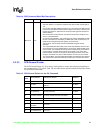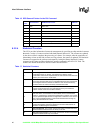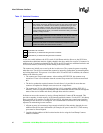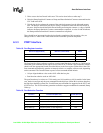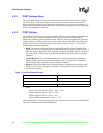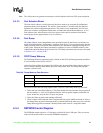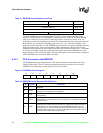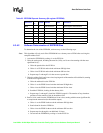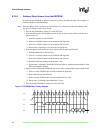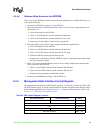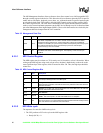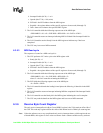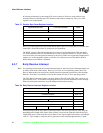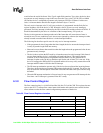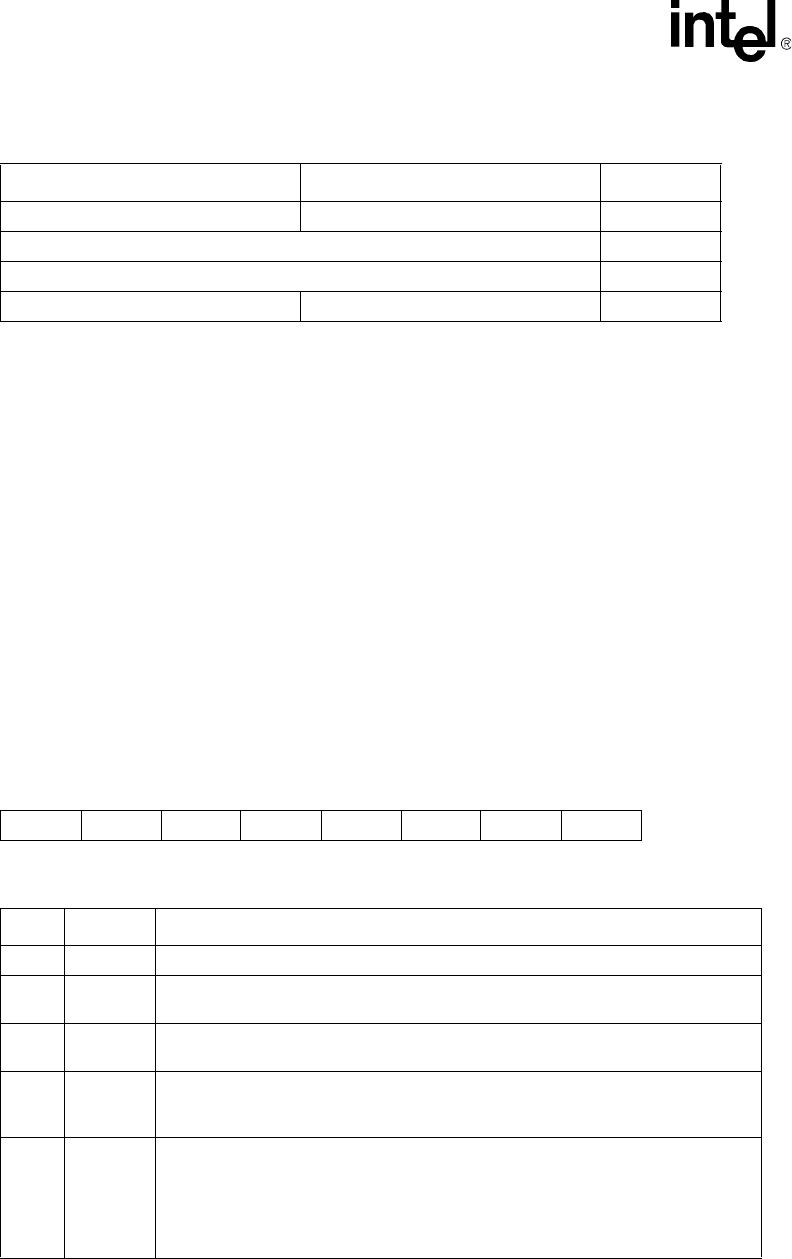
46 Intel 8255x 10/100 Mbps Ethernet Controller Family Open Source Software Developer Manual
Host Software Interface
The serial EEPROM or equivalent integrated circuit (IC) stores configuration data for the
controller and the adapter. The EEPROM is a serial in and serial out device. Serial EEPROMs
range in size from 16 to 256 registers of 16 bits per register. All accesses, read or write, are
preceded by a command instruction to the device. The command instructions begin with a logical 1
as the start bit, two opcode bits (indicating read, write, erase, etc.), and n-bits of address. The
address field varies with the size of the EEPROM and is 6 bits for a 64 register EEPROM and 8 bits
for a 256 register device. The end of the address field is indicated by a dummy 0 bit from the
EEPROM, which indicates the entire address field has been transferred to the device. A command
is issued by asserting the chip select signal and clocking the data into the EEPROM on its data
input pin relative to the serial clock input. The chip select signal is de-asserted after the completion
of the EEPROM cycle (command, address and data).
6.3.4.1 CPU Accesses to the EEPROM
The EEPROM access port is shown below. This register is located at offset 0Eh in the device
Control register block. The CPU directly manipulates these bits to read to or write from the
EEPROM. There should be no other local bus activity at this time.
Table 21. EEPROM Control Register Locations
Upper Word (D31:D16) Lower Word (D15:D0) Offset
SCB Command Word SCB Status Word Base + 0h
SCB General Pointer Base + 4h
PORT Base + 8h
EEPROM Control Register Reserved Base + Ch
Figure 12. EEPROM Control Register
23 22 21 20 19 18 17 16
X X X X EEDO EEDI EECS EESK
Table 22. EEPROM Control Register Bits Definitions
Bit Symbol Description
23:20 Reserved.
19 EEDO
Serial Data Out. This bit contains the value read from the EEPROM when
performing a read operation on the EEPROM.
18 EEDI
Serial Data In. The value of this bit is written to the EEPROM when performing
write operations.
17 EECS
Chip Select. Setting this bit to 1 enables the EEPROM. Setting the bit to 0 disables
the EEPROM. This bit must be set to 0 for a minimum of 1 µs between consecutive
instruction cycles.
16 EESK
Serial Clock. Setting this bit to 1 drives the serial clock line to the EEPROM high.
Setting this bit to 0 drives the serial clock line low. Toggling this bit high and then low
clocks data in or out of the EEPROM. The serial EEPROM specifies a minimum
clock period of 4 µs. The minimum period that the clock can be high or low is 1 µs. If
the clock is driven high for only 1 µs, then it must followed by a low period of 3 µs to
meet the minimum clock frequency specification.




